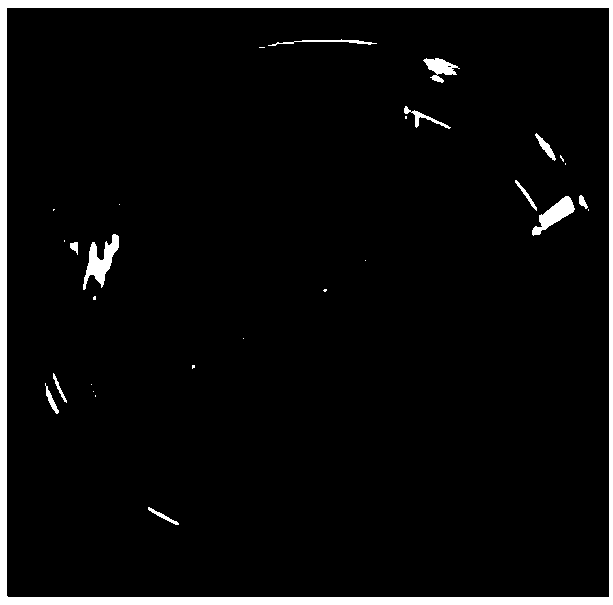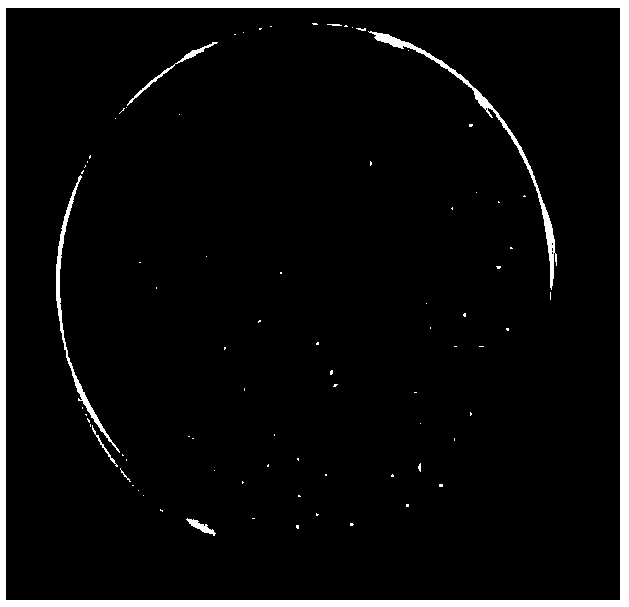3D printing-based artificial caviar edible for people with fish allergy and making method of caviar
A 3D printing and caviar technology, applied in the fields of application, food science, food ingredients, etc., to achieve the effects of simple process, good stability, good texture characteristics and gel characteristics
- Summary
- Abstract
- Description
- Claims
- Application Information
AI Technical Summary
Problems solved by technology
Method used
Image
Examples
Embodiment 1
[0037] A 3D printed artificial caviar that is edible for people with fish allergies is made of the following components in parts by weight: 80 parts of tap water or deionized water, 8 parts of alginate, 4 parts of konjac flour, 2 parts of soybean protein isolate, 0.2 parts of seaweed oil, 1 part of soybean lecithin, 5 parts of calcium chloride, 10 parts of gelatin, 30 parts of soybean oil, 5 parts of glucose and 0.1 part of β-carotene.
[0038] A 3D printed artificial caviar edible for people with fish allergies, comprising the following steps:
[0039] (1) Preparation of isolated soybean protein: Dissolve soybean protein isolate in tap water or deionized water at a mass volume ratio of 1:200 g / mL to obtain a preliminary solution; the preliminary solution passes through an ultrafiltration membrane with a pore size cut-off molecular weight of 5000Da Filtrate to obtain the ultrafiltrate; the ultrafiltrate is subjected to high-pressure micro-jet nano-dispersion treatment, wherein...
Embodiment 2
[0047] A 3D printed artificial caviar that is edible for people with fish allergies is made of the following components in parts by weight: 80 parts of tap water or deionized water, 8 parts of alginate, 4 parts of konjac flour, 2 parts of soybean protein isolate, 0.2 parts of seaweed oil, 1 part of soybean lecithin, 5 parts of calcium chloride, 10 parts of gelatin, 30 parts of soybean oil, 5 parts of glucose and 0.1 part of plant carbon black.
[0048] A 3D printed artificial caviar edible for people with fish allergies, comprising the following steps:
[0049] (1) Preparation of isolated soybean protein: Dissolve soybean protein isolate in tap water or deionized water at a mass volume ratio of 1:200 g / mL to obtain a preliminary solution; the preliminary solution passes through an ultrafiltration membrane with a pore size cut-off molecular weight of 5000Da Filtration to obtain the ultrafiltrate; the ultrafiltrate is subjected to high-pressure micro-jet nano-dispersion treatmen...
Embodiment 3
[0057] The 3D printed edible artificial caviar prepared in Examples 1 and 2 and the natural caviar purchased in the market were evaluated for color, shape and mouthfeel, and the following conclusions were drawn:
[0058] 50 volunteers, including 25 females and 25 males, scored Examples 1, 2 and Comparative Example respectively. 5 is the highest score, which means excellent, 4 is very good, 3 is acceptable, and 2 is bad and unacceptable. The results are shown in Table 1: The following is the average score:
[0059] Table 1 Sensory evaluation table of artificial caviar
[0060]
PUM
 Login to View More
Login to View More Abstract
Description
Claims
Application Information
 Login to View More
Login to View More - R&D
- Intellectual Property
- Life Sciences
- Materials
- Tech Scout
- Unparalleled Data Quality
- Higher Quality Content
- 60% Fewer Hallucinations
Browse by: Latest US Patents, China's latest patents, Technical Efficacy Thesaurus, Application Domain, Technology Topic, Popular Technical Reports.
© 2025 PatSnap. All rights reserved.Legal|Privacy policy|Modern Slavery Act Transparency Statement|Sitemap|About US| Contact US: help@patsnap.com


